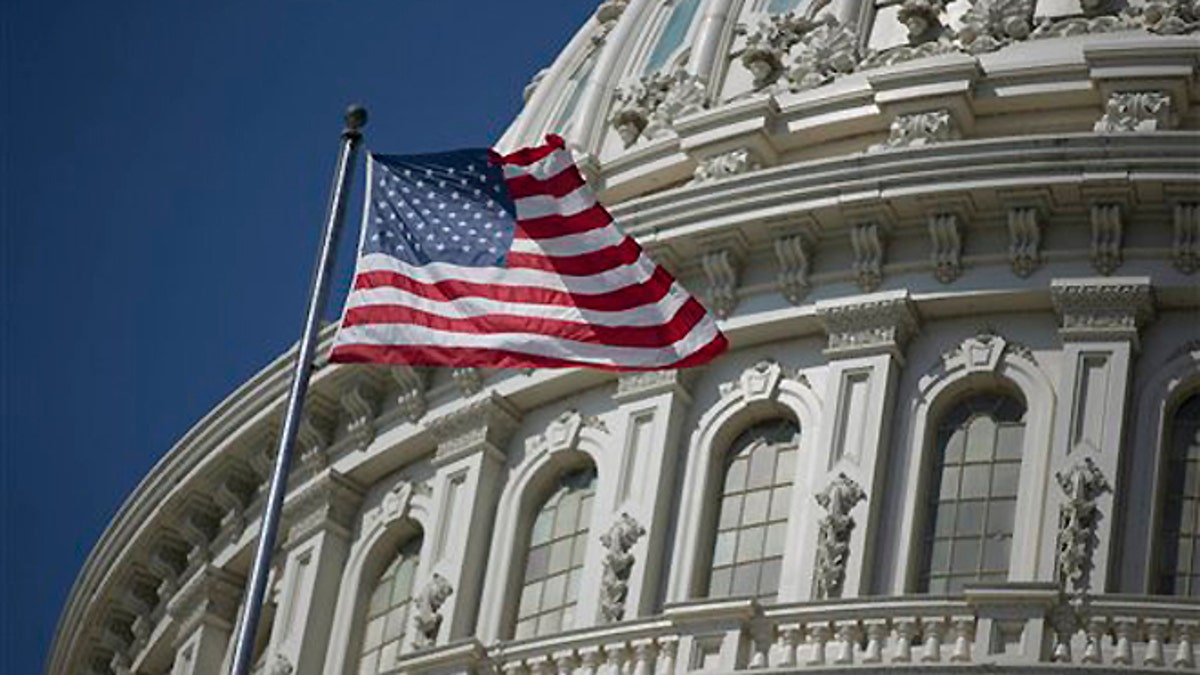
FILE -- Sept. 1, 2013: The dome of the U.S. Capitol is seen in Washington. (AP Photo/Carolyn Kaster)
Online advocacy – the ability of any citizen to voice their concern or request with their elected leaders using the Internet – hasn’t changed much in 15 years, and it’s time to upend how it works.
Even before the recent partial government shutdown, congressional approval ratings were as low as they have ever been in the history of polling.
The partial government shutdown not only exacerbated this disapproval, but piled onto it a feeling of general powerlessness among many Americans to influence their legislators. That feeling, more than anything else, needs to change.
[pullquote]
We know that the public should have a greater role in government, but the promise of making that possible online – or even offline through letter writing and phone calling – is far from fulfilled.
We are in a digital era where almost everything is a click away, a period of unprecedented openness and accountability. From tweets at the White House to comments on congressional Facebook pages, there are more tools today than ever before for citizens to “make their voice heard,” and hundreds of millions of people have used them to direct petitions to government leaders about every issue under the sun.
The great result is a widespread expectation that anyone can advocate on behalf of something he or she cares about and that public leaders should listen.
So why does it still feel like our elected officials are more distant and inscrutable than ever? The Internet has given everyone a voice, but are those voices being heard?
At the heart of the problem is this: by simply “adding their voice” to an opaque advocacy system designed to allow legislators to receive messages, not interact or engage with constituents, citizens aren’t really being heard.
Worse yet, this system doesn’t even do the one thing it’s supposed to do – send your message to decision makers – all that well. It’s not just a problem for a citizen who want to be heard; it’s a major challenge for the mayors, governors and members of Congress on the receiving end.
If you are a member of Congress today, you receive thousands upon thousands of unorganized emails and social media messages each week on every topic imaginable, often from people who aren’t your constituents.
Attempting to make sense of it all is the full-time job of multiple staff members and interns, and not one of them would honestly tell you they have a handle on it all or are able to effectively engage with all the senders of those messages.
Of course, if you are a citizen petitioning your member of Congress, you are equally stymied. It’s easy for you to sign a petition that generates an email to your representative or to write an email yourself. But did they get your e-mail? Did they read it? Did they care? How many other people have written in on the same topic? Who are they, and how can you connect to them?
The modern tragedy of advocacy is that, too often, “effective” online organizing drives so many people to contact government leaders that those leaders can’t distinguish the signal from the noise, leaving them feeling bombarded and attacked, rather than ready to work toward solutions with the people they were elected to serve.
Indeed, many decision makers still view the press release as their go-to response vehicle, hoping that traditional media will cover their message in soundbites better suited for political gamesmanship than problem solving.
The solution is not to increase the number of messages going in but change the way that both citizens and elected leaders engage with one another. Instead of bringing citizen voices inside government, we need to bring government out to where the people are.
This week, Change.org is launching a new initiative to realize the potential of this type of two-way communication.
The tool, called Decision Makers, brings government leaders and users face-to-face online by allowing elected officials to respond directly and publicly to Change.org petitions sent by their constituents.
Petitions signed to a given elected official will be out in the open and aggregated into a quickly-searchable profile page, meaning citizens will know which issues people in their communities are taking action on, how many people have joined in, and how elected officials have responded.
Leaders like Rep. Paul Ryan and Sen. Elizabeth Warren have already signed up for Decision Makers, and elected leaders at all levels of government will be following in the coming weeks.
Tools like these upend advocacy by transforming the very definition of political engagement. The shutdown and ensuing political finger pointing left us feeling more powerless than ever, but what if, next time, Congress spent those 16 days listening and responding to constituent concerns directly? Not through press releases, but through public online messages that reach citizens in real time?
It’s nearly impossible to change a game by continuing to play it the same way. By incentivizing government to go where the people are, we’re taking the first steps in changing how the game itself is played.
